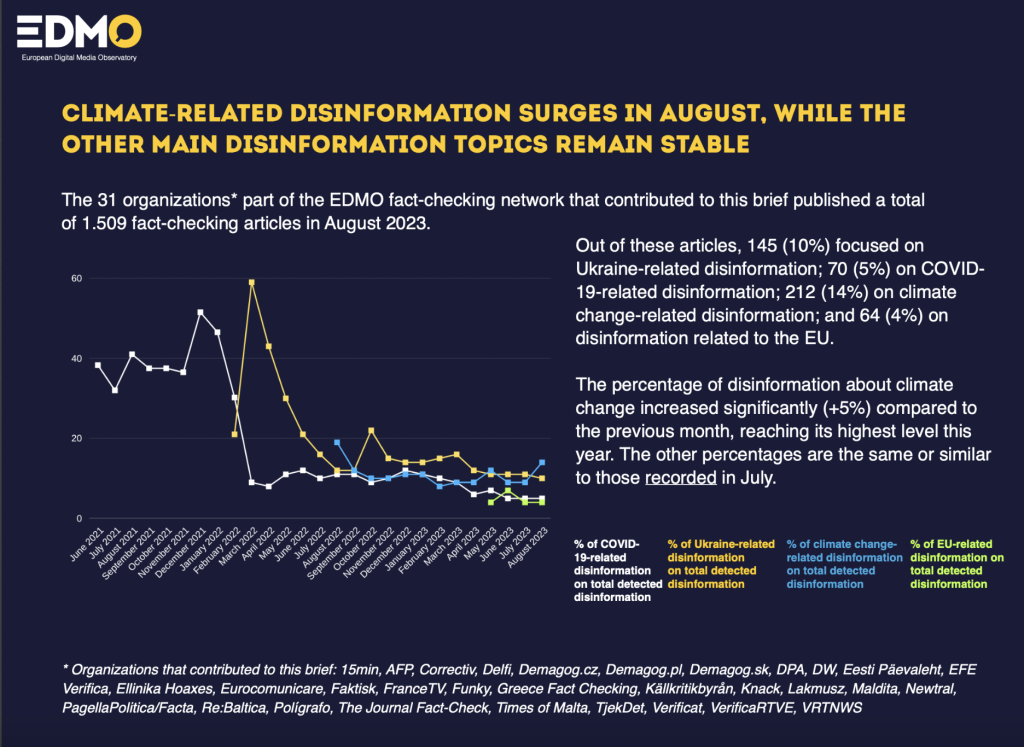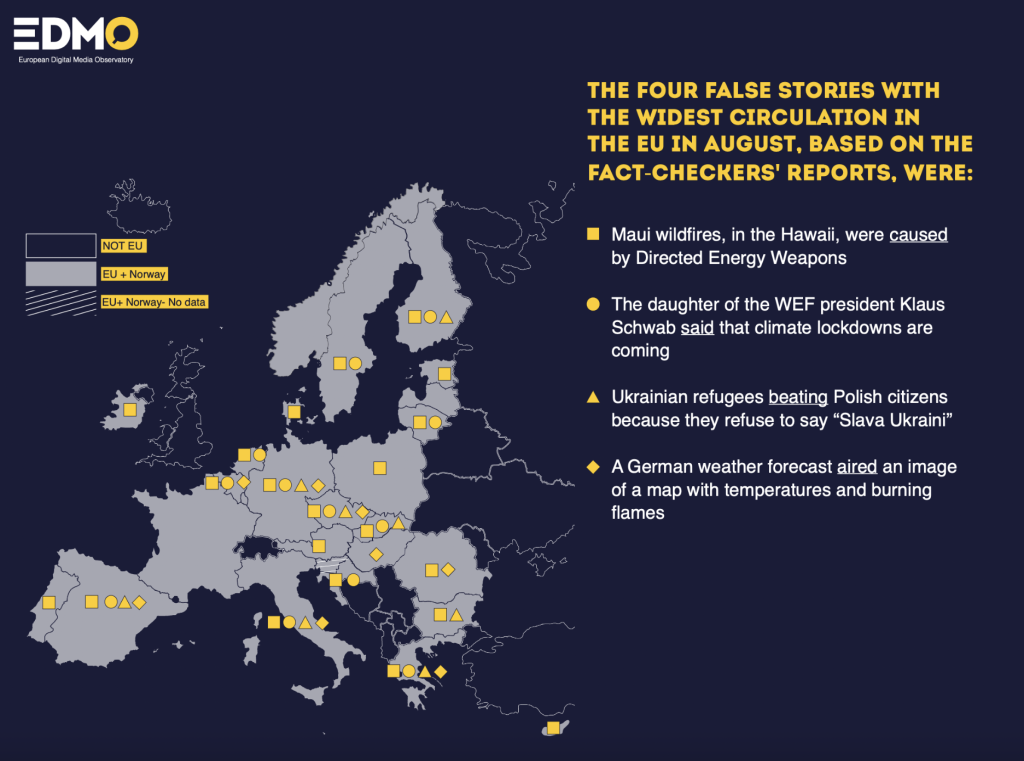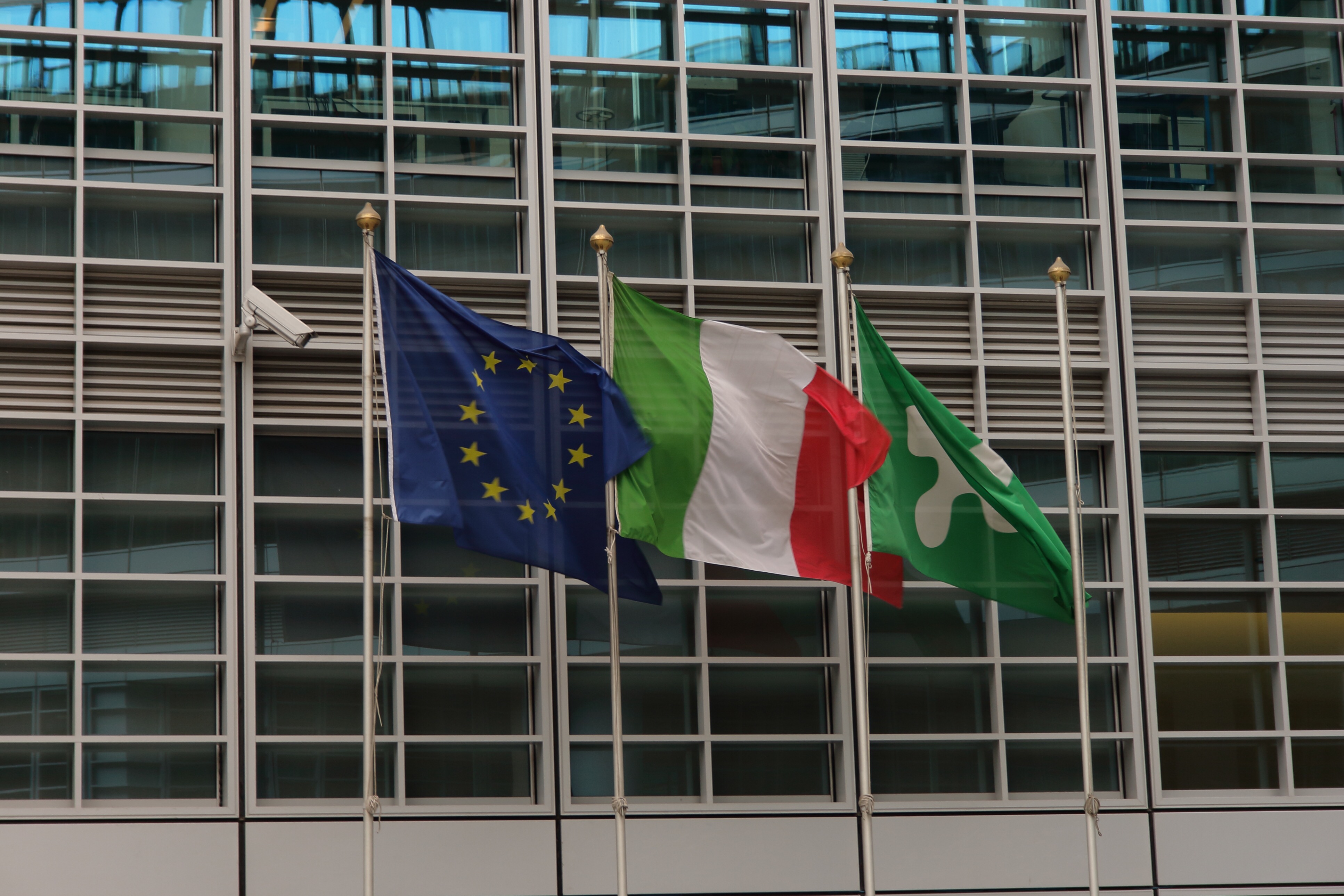
Main narratives about climate change
New conspiracy theories about climate change have led to a significant rise of disinformation on this topic. The new conspiracy theories mainly concern the various wildfires that occurred in different parts of the world in August. In particular, one of the most common false stories is that the fire in Maui, Hawaii, was caused by Directed Energy Weapons, a kind of destructive laser beam. This conspiracy theory is often linked to other false claims. For example, that the fires are supposedly part of a strategy to impose the “15 minutes” urban concept, or that they were predicted in some cartoons. Forest fires in Greece were described as being set to make way for wind farms, and disinformation about fires in the north-east of the country led to incidents of violence against migrants (see slide 5).At the same time, long-running false narratives, e.g. that climate change is not real or not caused by human activity, as well as that electric vehicles are dangerous or useless, are still widespread in several European countries. EU institutions are also falsely accused of planning severerestrictions in the name of the climate crisis.
Main narratives about war in Ukraine
Regarding the war in Ukraine, one of the main topics of disinformation in August was the supposed death of Yevgeny Prigozhin, the head of the Wagner mercenary company. Severalfake videos were circulated purporting to show the crash of the plane in which he was supposedly travelling. Another false story claimed that the BBC had reported that Prigozhin was alive after the incident. In general, unfounded stories and theories about his death circulated in several countries, including Belgium, Denmark, Germany, Italy and Spain.In Slovakia, where elections will be held on 30 September, disinformationaboutthe war in Ukraine appears to be very relevant. For example, a Slovakian politician spread the false information that only a minimal amount of Ukrainian grain goes to poor countries, while another shared a post falsely attributing the murder of some children to “Bandera soldiers”, in line with recurring Russian propaganda narratives.There are no other notable developments in the disinformation narratives about the war outlined in previous months. Many of the false stories concern Ukrainian refugees, who are accused of mistreating European citizens or damaging the economies of their host countries. Unsubstantiated information has also claimed that Wagner soldiers are hiding among them in order to enter Poland.
Wildfire in north-eastern greece fuel disinformation against immigrants
The forest fire that broke out on 19 August in the Evros region (north-eastern Greece) has been declared the largest ever recorded in Europe, with tragic consequences. Although local authorities say the Evros fire was probably caused by lightning, a number of false stories were spread on social media, often accompanied by racist messages, accusing migrants of deliberately starting the fires. A few days later, a Greek TV station wrongly announced the arrest of two migrants for setting the fire. Although the authorities denied any arrest and the TV station itself corrected the mistake the following day, the statement was echoed by several online media and by many citizens on social networks. This has exacerbated the xenophobic sentiments, which are already very strong in border areas such as Evros. In recent weeks, these violent messages have even led to attacks and physical violence against migrants.




